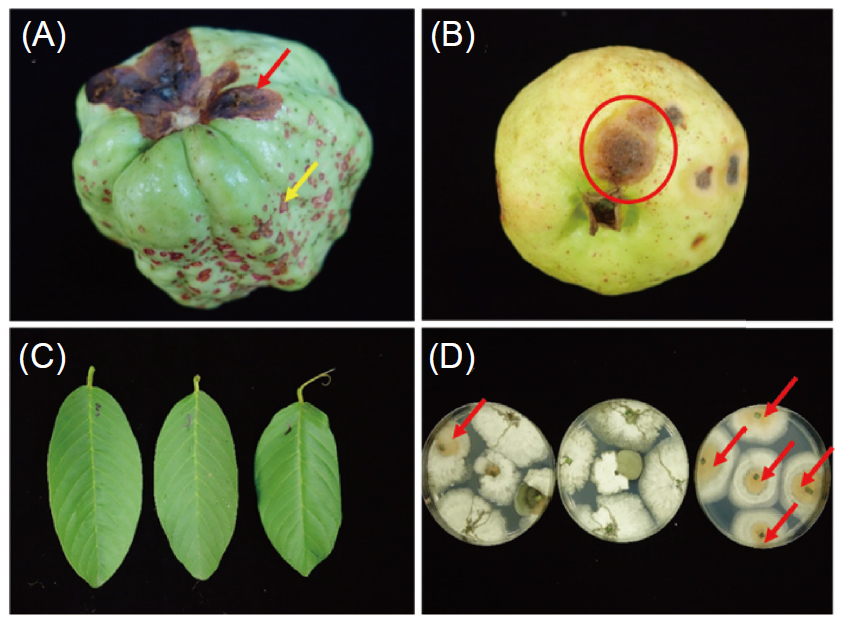All issues

Author:Shuen-Huang Tsai*, Kuan-Wen Chen, and Chien-Jui Huang
Abstract:
Guava anthracnose is one of the important diseases of guava fruit from harvest to post-harvest. The aim of this study is to understand the main species of Colletotrichum that currently occur in guava orchards, and to investigate the sensitivity of these Colletotrichum spp. to the approved fungicides registered for anthracnose management. From 2019 to 2020, symptomless leaves and diseased fruits of guava anthracnose were collected from the main production areas in southern Taiwan. Fifteen isolates were obtained and inoculated on ‘Zhen-chu Ba’, respectively. The results showed that wounds are needed for most isolates to cause fruit rot symptoms, and the isolates obtained from diseased fruit is generally more virulent than the isolates obtained from symptomless leaves. To identify the species of collected Colletotrichum isolates, five genes including internal transcribed spacer (ITS), glyceraldehyde-3-phosphate dehydrogenase (GAPDH), β-tubulin 2 (TUB2), chitin synthase 1 (CHS-1) and calmodulin (CAL) were sequenced and a phylogenetic tree was constructed. The constructed phylogenetic tree indicated that guava anthracnose in Taiwan includes at least three species, namely, Colletotrichum siamense, Colletotrichum fructicola and Colletotrichum tropicale. The fungicide tests show that C. siamense and C. fructicola are generally insensitive to benzimidazoles and strobilurins, while C. tropicale is sensitive to benzimidazoles but it is not sensitive to strobilurins. Comparing with the other two Colletotrichum spp., C. tropicale has a different sensitivity to benzimidazoles. In addition, at concentration of 100 mg active ingredient per liter, iminoctadine and mancozeb can completely inhibit the mycelial growth of the three Colletotrichum spp. thiabendazole + oxine copper and dithianon can significantly inhibit the germination of the spores among three Colletotrichum spp. The above results can provide farmers a reference for integrated pest management of anthracnose in the field.
Key words:Guava (Psidium guajava L.), Colletotrichum spp., Phylogenetic analyses, Fungicides sensitivity test
Download:![]() PDF Links
PDF Links
- 1. Development of Tractor-Mounted Seedling Transplanter for Sweet Potato
- 2. Synergistic Effect of Additional Gas on the Toxicity of Phosphine to Sitophilus oryzae and Sitophilus zeamais (Coleoptera: Dryophthoridae)
- 3. Effects of Temperature and Solar Radiation on Growth Traits and Plant Elements in Purple Leafy Sweet Potato
 Submit your manuscript
Submit your manuscript
 Guide for authors
Guide for authors